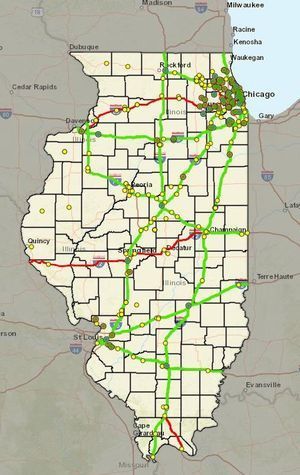EPA “Bets the Farm” on EVs

The Environmental Protection Agency’s vehicle emissions standards are driving the United States towards electric vehicles and away from renewable fuels. The EPA proposal, released in April, will require 67% of cars and nearly 50% of trucks sold in 2032 to be electric.
The ruling would also impact ethanol production, costing the agriculture industry an estimated one-billion bushels of corn from 2022-2032.
"I can't operate my farm with an electric truck,” said hog farmer and Illinois Corn Growers Association member Mark Wilson from Toulon. “This proposal does not consider the needs or the current infrastructure of rural America. We are putting all our eggs in one basket.”
In addition to its push for electric vehicles, the regulations would significantly raise the price of eternal combustion engines after 2032. The United States’ electric infrastructure is not present to support an electric car fleet of this kind. There are currently less than 1,100 public electric vehicle charging stations in Illinois. Out of all the public charging stations 277 have an address in Chicago.
“To meet the federal (zero-emissions vehicle) sales targets, 1.2 million public chargers are needed by 2030. That amounts to approximately 400 new chargers per day,” said Toyota Chairman Akio Toyoda in an article published by the Wall Street Journal.
A great solution at home
The EPA’s proposal also leaves the United States dependent on foreign countries for the materials in electric vehicle batteries. The lithium-ion batteries are made from lithium, aluminum, graphite, cobalt, nickel, and manganese. The United Nations Conference on Trade and Development reported over two-thirds of global cobalt production is produced in the Democratic Republic of the Congo. Additionally, China, Brazil, and Turkey account for about 80% of natural graphite reserves.
The agency ruling does not consider the environmental risk of mining electric battery materials or the positive environmental impacts of renewable fuel. The goal of the ruling is electronification not reduction. Toyoda said hybrid vehicles reduce more carbon than electric vehicles.
“The number of raw materials in one long-range battery electric vehicle could instead by used to make 6 plug-in hybrid electric vehicles or 90 hybrid electric vehicles,” said Toyoda. “The overall carbon reduction of those 90 hybrids over their lifetime is 37 times as much as a single battery electric vehicle.”
The future of fuel has multiple avenues that can reduce the United States’ carbon footprint. IL Corn urges the EPA to think beyond electric vehicles and consider more than one transportation technology as our country moves towards lower carbon travel.
IL Corn urges the EPA to give Congress the opportunity to regulate these issues instead of overreaching its authority and deciding for consumers the future of the market.
Unhappy with this proposal? Submit comments to the EPA through the agency’s docket. Feedback on the EPA standards closes July 5th.






